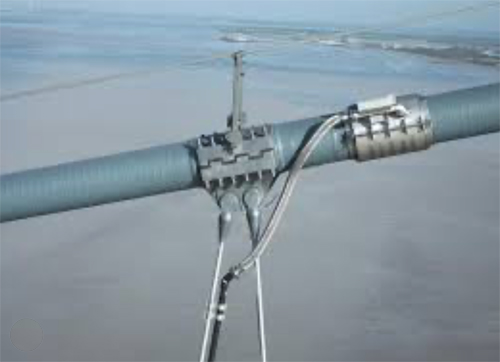If you think drivers benefit from the congestion pricing pause, Gov. Hochul has a bridge to sell you.
One of the unheralded projects that is apparently now suspended because of the $15-billion hole that Congestion Kathy blew into the MTA's capital budget is "Project VN-8Q: Main Cables Dehumidification at Verrazzano-Narrows Bridge."
What's that? That's what board member Midori Valdivia wanted to know, too.
Project VN-8Q is no small deal for the 60-year-old span. In early May, the agency sought bidders on a $100-million contract for "the installation of a main cable dehumidification system on the four cables of the Verrazzano Narrows Bridge to preserve the current strength of the main cables."
Wait, wut? "To preserve the current strength of the main cables"? That doesn't sound like something that should be canceled.
Nor does this (emphasis ours): "The project also includes installation of associated electrical and communication systems, maintenance and monitoring of the new main cable dehumidification system for five years after commissioning, internal inspection of main cable panels, replacement of all cable band bolts, replacement of the main cable aerial obstruction lights and supports, replacement of the messenger cables, the installation of an acoustic monitoring system on all four cables, maintenance and monitoring of the acoustic monitoring system for five years after commissioning, and the replacement of the hand ropes and stanchions."
When asked about how a suspension project like this could be, um. suspended, MTA Deputy Chief Development Officer Tim Mulligan called dehumidification a "state-of-the-art process to stop or slow down the erosion of the main cable."
That prompted a nervous chuckle from Valdivia, prompting Mulligan to continue, "It's essential to the lifespan of the bridge."
Again, that sounds important. Mulligan agreed.
"It's an important project and we really want to do it," he said. "But we're just not going to be able to get to it as fast as we want it to, depending on how long the unavailability-of-funds period extends."
That phrase — "unavailability-of-funds period" — is the MTA staff's shorthand for "Gov. Hochul's decision to pause congestion pricing and eliminate $15 billion in capital plan funding." But, go on, you were saying ...
"It [the main cables] will be impacted with an extended period of unavailable funds," he added.
Valdivia, a strong transit advocate, expressed concern for drivers in Staten Island and Brooklyn, the latest victims of what the MTA now says is $16-billion worth of work that it can't perform due to Hochul's pause. (Other victims, of course, include tens of thousands of disabled riders who won't get elevators as quickly as promised, plus millions of people who use subways and buses that won't be as good.)
On the chopping block now:
— Mark D. Levine (@MarkLevineNYC) June 26, 2024
* Phase 2 of 2nd Av Subway
* 23 subway station accessibility upgrades
* New trains, buses & signals
Congestion pricing is the only viable way to fund the MTA's capital budget while relieving horrible congestion in the zone.
Time to unpause the pause.
"So this will hamper longevity of the Verrazzano?" she asked.
Cathy Sheridan, president of the MTA Bridges and Tunnels division agreed.
"This would be a long-term impact," she said.
You can be forgiven for not knowing what a cable dehumidification system is because such technology only made it to these shores in 2017, when Maryland's Bay Bridge was outfitted with such a system, which was only invented two decades earlier in Japan ("Land of the Dry Bridge").
Dehumidification technology appears to be a major advance on the old way of doing things, reported Roads and Bridges.

"Main cables, the most critical asset on suspension bridges, have typically been protected ... primarily by regularly renewing the paint-and-caulking or by oiling, where specially formulated linseed oil is poured into the cable to coat individual wires," the trade publication reported. "The objective of main-cable dehumidification is to practically arrest corrosion in the cables so that bridges can achieve their 100-plus-year design life potential."
The system functions pretty much as it sounds: Dry air is injected into the bridge’s main cables to remove trapped moisture and "maintain a dry, non-corrosive cable environment," the magazine said.
Is that important? Yes! "Corrosion of main cables on suspension bridges is a wide spread, well known and very serious problem," Danish bridge engineer Matthew Bloomstine famously wrote in 2020. "Dehumidification is the only method that actually prevents corrosion, whereas other methods can at best only slow down corrosion."
In a statement issued on Wednesday, Gov. Hochul did not touch on the Verrazzano Bridge cable moisture issue, but merely said, "There is no reason for New Yorkers to be concerned that any planned projects will not be delivered."
Also on the plus side, in its most-recent inspection report, the Verrazzano was rated as "not" in poor condition.
Yet.






